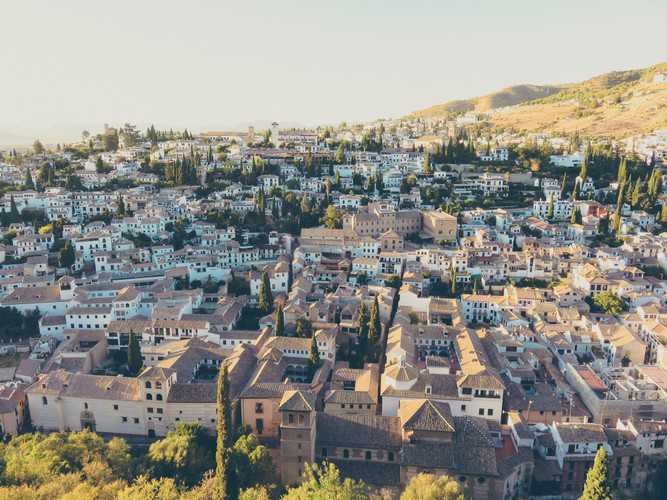Welcome to the mesmerizing world of photography, where we unravel the enigmatic charm of the versatile 70mm prime lens. In this journey, we delve into the depths of its zoom capabilities, explore its equivalents on crop sensor cameras, unravel the differences between the Sigma 24-70mm and 24-105mm lenses, discover the diverse applications of the 70mm focal length, and ponder upon the question of whether the 24-70mm f/2.8 lens is suitable for portraits. From capturing breathtaking landscapes to intimate portraits, the 70mm prime lens is a powerhouse of versatility. Have you ever wondered how much zoom is packed into that 70mm focal length, or what it truly means when using it on a crop sensor camera? Are you unsure about the distinctions between the Sigma 24-70mm and 24-105mm lenses, and which one would best suit your needs? Join us as we embark on a journey through the fascinating dimensions of the 70mm prime lens, and let your imagination be ignited by the possibilities it holds.
How much zoom is 70mm?
When it comes to zoom capabilities, the 70mm focal length offers a moderate level of magnification. In the world of photography, zoom refers to the range of focal lengths a lens can achieve, allowing you to capture subjects up close or from a distance. At 70mm, your lens will provide a narrow field of view, allowing you to focus on specific details and compressing the perspective. This focal length is often favored for portraits or capturing subjects that require a bit of distance, such as wildlife photography. While it may not offer an extreme level of magnification like longer telephoto lenses, the 70mm prime lens provides a versatile range that can adapt to various shooting situations with ease. So, if you're looking for a lens that strikes the perfect balance between wide-angle and telephoto capabilities, the 70mm prime lens is sure to impress.

What is 28-70mm on crop sensor equivalent to?
On a crop sensor camera, the 28-70mm lens will have a different effective focal length due to the sensor's smaller size compared to a full-frame camera. The crop factor, usually around 1.5x or 1.6x, affects the field of view and magnification of the lens. In this case, the 28-70mm lens would be equivalent to approximately a 42-105mm lens on a crop sensor camera with a 1.5x crop factor. This means that the lens will have a narrower field of view, providing a more zoomed-in perspective. It becomes a suitable choice for portrait photography, close-ups, or situations where you need to capture distant subjects. Keep in mind that the effective focal length on a crop sensor can vary depending on the specific camera model and manufacturer, so it's always helpful to check the crop factor and do some research to get an accurate understanding of how your lens will perform.
What is the difference between Sigma 24-70mm and 24-105mm?
When comparing the Sigma 24-70mm and 24-105mm lenses, there are a few key differences to consider. The main distinction lies in the focal length range they offer. The Sigma 24-70mm lens covers a standard zoom range that allows for versatility in capturing a wide range of subjects. It is well-suited for everyday shooting scenarios and provides a slightly wider field of view, perfect for capturing landscapes or group shots. On the other hand, the Sigma 24-105mm lens offers a longer zoom range, making it more suitable for situations where you need to reach distant subjects without compromising image quality. The 24-105mm lens brings the advantage of a longer telephoto reach, enabling you to capture close-ups or wildlife from a distance. It also tends to have better optical performance towards the telephoto end, resulting in sharper images. Ultimately, the choice between the two lenses depends on your specific shooting needs and preferences, as well as your desired focal length range.
What is 70mm good for?
The 70mm focal length offers a range of creative possibilities in photography. Its moderate telephoto capabilities make it an ideal choice for different genres, including portraits, street photography, and some types of landscape photography. In portrait photography, 70mm provides a flattering perspective, slightly compressing facial features and creating a pleasing aesthetic that suits a variety of subjects. It allows for a comfortable shooting distance and excellent subject-background separation, making your subject stand out. When it comes to street photography, 70mm provides a versatile field of view, allowing you to capture candid moments without getting too close to your subjects. Additionally, this focal length is often favored for some landscape photography styles, particularly when you want to isolate specific details or focus on a particular element within the wider scene. Overall, the 70mm focal length offers a balance between wide-angle and telephoto, making it a fantastic tool for various genres of photography.
Is 24-70 2.8 good for portraits?
The 24-70mm f/2.8 lens is often considered a go-to choice for many professional portrait photographers. Its versatile focal length range combined with a wide aperture makes it incredibly versatile for capturing stunning portraits. With a focal range that covers both wide-angle and short telephoto, the lens allows you to frame your subject comfortably at different distances. The wide maximum aperture of f/2.8 provides excellent depth of field control, allowing you to achieve beautiful background bokeh and isolation of your subject. The lens excels in low-light conditions, ensuring sharp and detailed images even in challenging lighting situations. The 24-70mm f/2.8 lens also boasts impressive optical performance, producing sharp and high-quality images across its focal length range. Overall, its combination of focal length versatility, wide aperture, and excellent image quality make the 24-70mm f/2.8 lens a top choice for portrait photographers looking to capture stunning and professional-looking portraits.
Further Inquiries about 70mm prime
When comparing a 70mm prime lens to a zoom lens that covers a similar focal length range, there are a few factors to consider. Prime lenses are known for their exceptional image quality, as they are designed for a specific focal length and don't need to compromise for the versatility of zooming. They typically offer wider apertures, allowing for better low-light performance and more control over depth of field. On the other hand, zoom lenses provide the advantage of convenience and flexibility. They allow you to quickly adjust the focal length without changing lenses, making them ideal for situations where you need to capture subjects at different distances. Ultimately, choosing between a 70mm prime lens and a zoom lens with similar focal lengths depends on your shooting style, desired image quality, and the specific needs of your photography.
When using a 70mm prime lens for landscape photography, there are a few considerations to keep in mind. First and foremost, the 70mm focal length falls within the moderate telephoto range, which means it offers a narrower field of view compared to wide-angle lenses. This can be advantageous for certain types of landscape photography, such as capturing intimate details or isolating specific elements in a scene. However, it may not be ideal for capturing expansive landscapes in their entirety. Additionally, when shooting landscapes with a 70mm prime lens, pay attention to the composition and framing. Experiment with various angles and perspectives to make the most of the lens's focal length. Lastly, consider using a tripod to ensure sharp images, as the longer focal length may be more prone to camera shake. Don't hesitate to explore the creative possibilities that a 70mm prime lens brings to your landscape photography.
A 70mm prime lens can be a fantastic choice for street photography due to its versatility and ability to capture candid moments while maintaining a comfortable shooting distance from subjects. The moderate telephoto range of a 70mm lens allows you to photograph scenes and individuals without getting too close, preserving their natural behavior and expressions. With this lens, you can capture street portraits with a pleasing compression of features, making your subjects stand out while still maintaining a sense of context within the surroundings. The 70mm focal length also provides a versatile field of view, allowing you to capture broader street scenes and environmental elements that add depth and storytelling to your photographs. Additionally, the wide maximum aperture of many 70mm prime lenses enables shooting in various lighting conditions, ensuring sharp and well-exposed images even in challenging situations often encountered in street photography.
As we conclude our exploration of the versatile 70mm prime lens, we have unraveled its zoom capabilities, equivalents on crop sensor cameras, the differences between different models, its diverse applications, and its suitability for portraits. From capturing intimate details to framing breathtaking landscapes, the 70mm prime lens has proven to be a powerhouse of versatility. With its moderate telephoto capabilities, it strikes a balance between wide-angle and telephoto focal lengths, making it suitable for genres like portraits, street photography, and even some landscape photography styles. Whether you're seeking a lens for capturing distant wildlife or candid moments on the streets, the 70mm prime lens offers the flexibility, image quality, and control over depth of field that photographers desire. With the world as your canvas and the 70mm prime lens as your tool, the possibilities are boundless.



